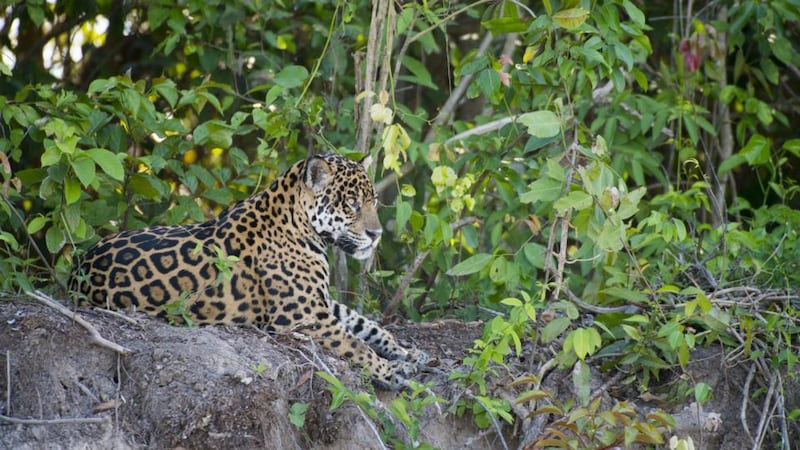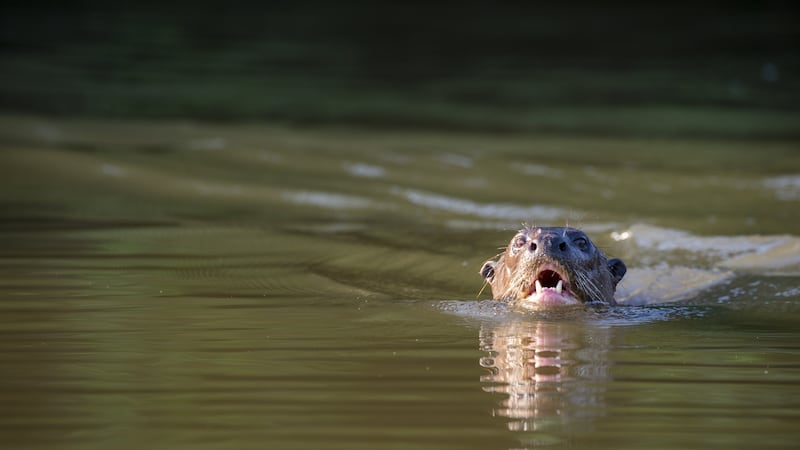Many years ago, dreaming my way through schooldays with the help of a world map hanging on the classroom wall, the swamp icons clustered in the middle of Brazil caught my eye, again and again. So did the strange names associated with them: Mato Grosso and, where the icons were thickest, Pantanal.
Perhaps somebody told me something about this region, or perhaps it was just the evocative power of those swamp icons, but the Mato Grosso became the quintessential emblem of wildlands, teeming with strange and wonderful creatures, such as the macaw, tapir and toucan, in my mind’s eye.
The facts on the ground, of course, were rather different, even six decades ago. Most of the Mato Grosso, the "Great Scrubland", has long been transformed to ranchland. You approach the Pantanal ("Great Marshland") today past the vast slag heaps of a score of gold mines.
Some of the Pantanal has also been converted, rather less successfully, into cattle farms. It doesn’t look like a wetland at all for the first couple of dozen kilometres, at least in the dry season. But a sudden profusion of hawks, kites and wading birds, right along the roadside, does suggest a big shift in land use.
You really know you are in the Pantanal when the road surface switches from blacktop to red dirt. At the same time, rather confusingly, the colour of the ubiquitous termite mounds in the landscape also changes, but in reverse, from red dirt to grey. The reason? The constructors of the so-called Transpantaneira Highway covered the unstable marsh surface with heavy red soil from north of the area, while the termite construction proceeds perfectly well with the lighter local grey and sandy materials.
The farther you drive towards the Cuiabá the fewer ranches you see. Marshes often stretch from one far horizon to another
The original plan for the highway was to traverse the whole marshland, facilitating the most adventurous ranchers, whose cattle graze deep into the region despite vast seasonal flooding. But the road has never been finished. It ends abruptly, 140km and 120 bridges farther south, on the banks of the River Cuiabá, the limit of the northern half of the Pantanal. The farther you drive towards the Cuiabá the fewer ranches you see. Marshes, interspersed with slightly higher patches of wet and dry forest, often stretch from one far horizon to another.
Some of the remaining ranches are also ecolodges now. You are more likely to encounter long lenses than lassos at dawn on the range these days, although I did see a runaway horse getting dramatically roped by three cowhands on one early-morning birding trip.
But it’s still remarkably easy to re-enter the dreamtime of wilderness, from the moment we get into a boat on the Rio Claro. A baby caiman surfaces just a metre away, before we even leave the little wooden dock.
Forest closes in around the river as we head upstream in the honeyed afternoon light. The air is dense with the intoxicating scent of, I think, chameleon vine
Forest closes in around the river as we head upstream in the honeyed afternoon light. The air is dense with the intoxicating scent of, I think, chameleon vine. A big patch of shrubby trees is festooned with a single glistering spider’s web, made by a species as tiny as its colonial webs are outsize.
Small becomes beautiful when a movement in the undergrowth catches our guide’s attention. An American pigmy kingfisher, brilliantly plumaged in green, white and orange, perches just beside us, smaller than a chaffinch. Just a few moments later we get an equally good view of an apparently identical bird, but almost three times larger, an Amazon kingfisher.
We will see two more kingfisher species in the next hour, along with a toco toucan, and a remarkable display by two yellow-bellied dacnis. No, I had never heard of them before either, but I will never forget their dance.
It’s the mammals, though, that provide the biggest surprises on this first short outing. First come the giant otters, initially visible only as undulating surges of water along the river’s edge. Then they pop up their heads nearby to get a good look at us. Their long lower incisors gleam like white stilettos, the better to grip a slippery fish with, no doubt. We will see them again, many times.
The shadows move and something big wades into the river. It is a tapir, and it considers us with its enormous eyes before vanishing back into the forest
The evening light is fading now, but we spot an adult and a juvenile coati, an animal best pictured as a cross between a small fox and a lemur, long bushy tails comically erect as they crouch to sip water.
Then the shadows move again, and something much bigger wades right out into the river, only a dozen metres away. It is a tapir, and it seems to consider us for long minutes with its enormous eyes before vanishing back into the forest. As we return downstream, nightjars offer us rare views as they hawk insects over the boat in the moonlight, numerous as swifts on an Irish stream.
The next four days are filled with an abundance and variety of wildlife that are today, in most parts of the world, the stuff only of dreams and distant memories. The names of some of the birds here are poetry in themselves – plumbeous ibis, rufescent tiger heron, red-throated piping guan – and their colours and voices live up to their billing.

Much of the nature tourism in the Pantanal is, however, focused on just one animal, the jaguar, which is both exceptionally common and exceptionally approachable in the region. Its regular visibility is possibly a legacy of illegal feeding by tour operators, a dangerous practice now, with luck, curtailed.
It is certainly remarkable to see such a regal creature emerge very slowly on a forest bank on a sunny morning, creeping stealthily above the water in search of caimans.
The dramatic outcome of such a hunt, brilliantly filmed by the BBC for Planet Earth II (and now plastered over YouTube with some most unfortunate commentaries) sets expectations very high. But for much of the time the jaguars just snooze in the sun, apparently oblivious to the proximity of half a dozen boatloads of people waiting for them to move a muscle. It can feel more than a little like a zoo experience.
But that jaguar focus leaves a great deal of space to quietly explore the river’s teeming backwaters.
For us the greatest pleasure was to spend the sunrise in the company of a large family of giant otters, as they fed noisily and bloodily on carp. And then return to them at sunset, when they groomed each other playfully and meticulously, before retiring to spend the night together in their den.
That was our signal to retire ourselves, and dream, to a soundtrack of night wildlife echoing around our cabins.

Pantanal ecotourism: access, costs, benefits and threats
I travelled in the region with Birding Pantanal, which handled all logistics and provided a guide whose knowledge of birds and mammals was as inexhaustible as her patience and good humour; birdingpantanal.com.
A recent study (you can read a PDF at iti.ms/2wjDaZh) suggests that although ecotourism is booming in the Pantanal, a great deal more conservation management and planning are needed to make it sustainable. In a sadly familiar scenario, existing regulations are often flouted.
Another article (at iti.ms/2yHiZWD) shows that the financial benefits of jaguar conservation to the region far outweigh the costs in cattle predation. But those benefits need to be much more fairly distributed to local people to ensure popular support for implementation of hunting and farming regulations.
The biggest threat to the Pantanal's ecological integrity, however, comes from a transnational scheme, the Hidrovía Paraná-Paraguay project, which aims to "improve" the great rivers that feed its marshes; you can read an assessment at iti.ms/2wkciIw.








